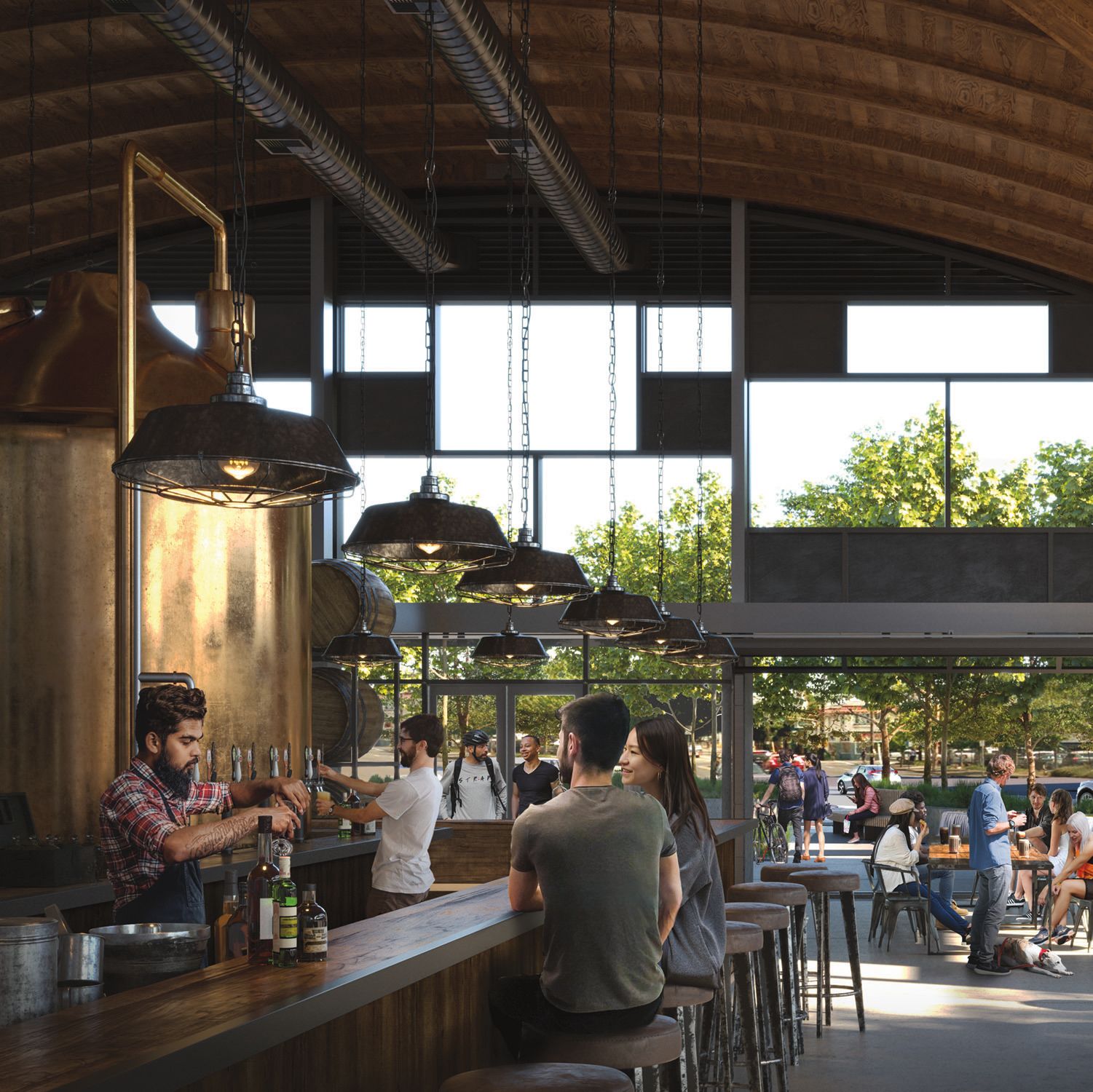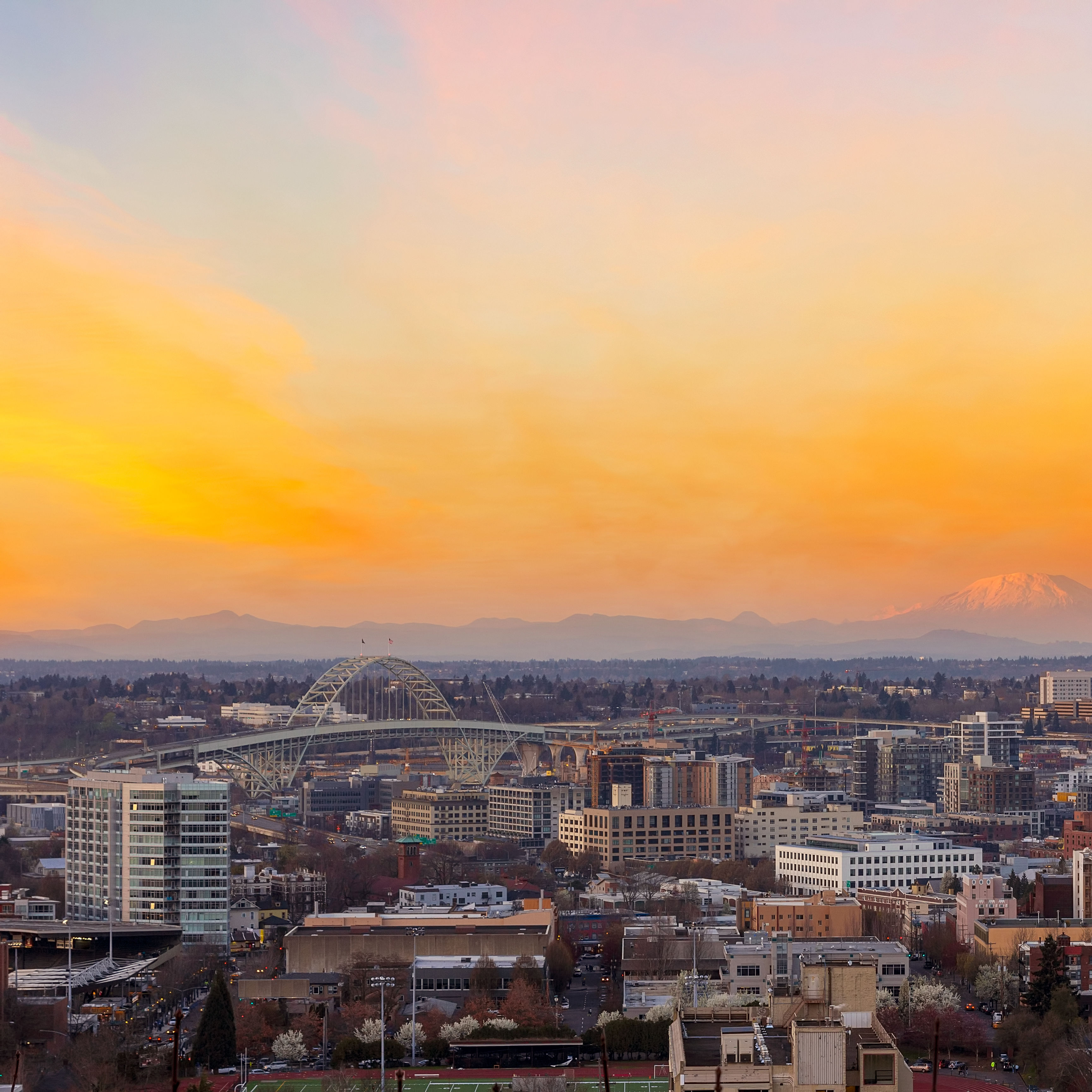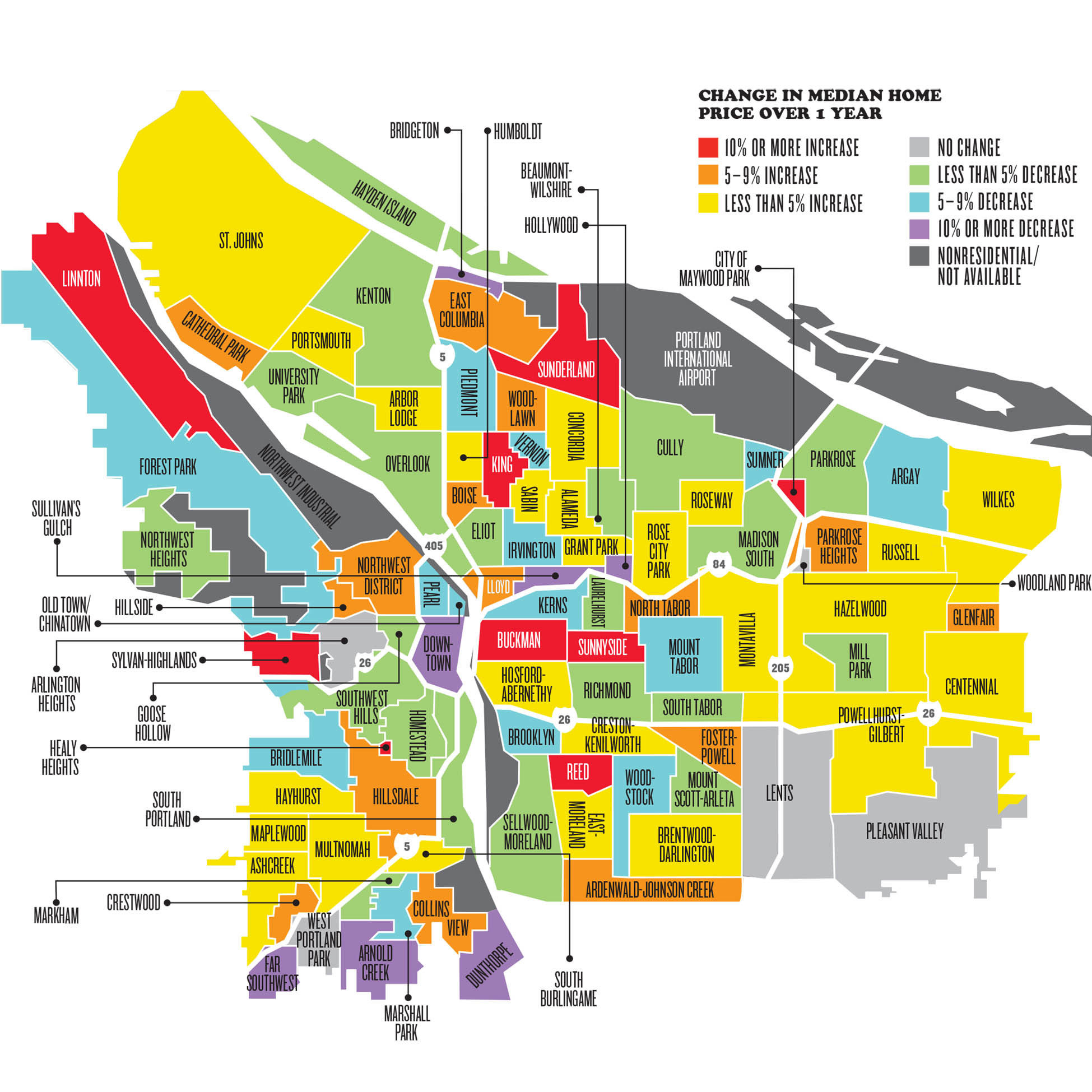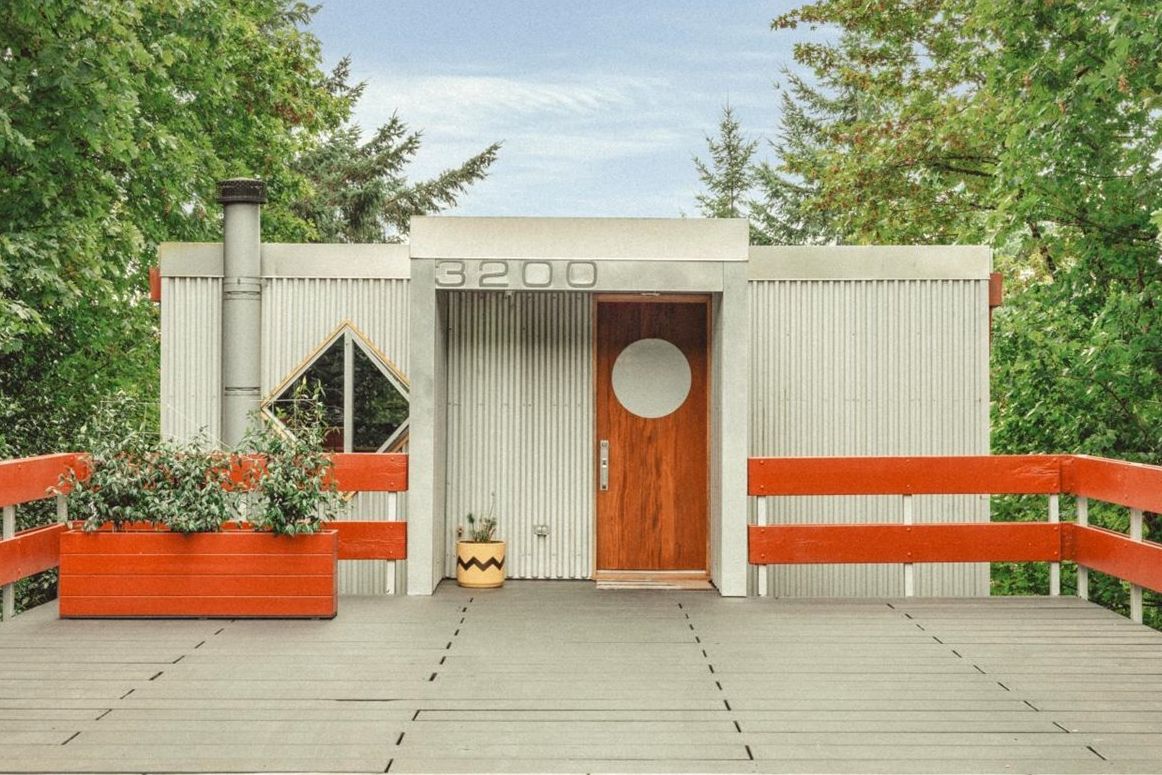Three Projects Reshaping Portland Neighborhoods
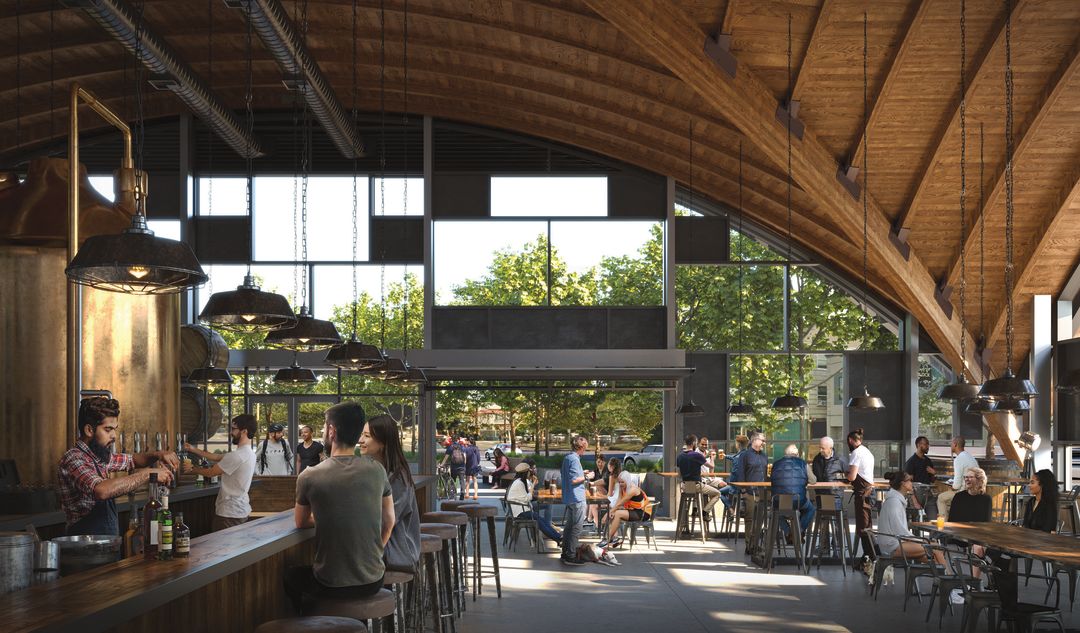
Blending new and old at the Pepsi Blocks
Image: Courtesy Mithun and Brick
OK, genius: if Portland’s building boom is slowing down, then what’s up with all the cranes?
After all, you heard it here first: the market is leveling off. Big-ticket projects—like the more-than-1,100-unit 1400 Multnomah development in the Lloyd District—are now kaput. And just over 8,300 market-rate apartments were under construction in November 2019, a sharp drop-off from the 12,500 in the works during summer 2018. (Some of the blame—or credit—belongs to Portland’s inclusionary zoning requirements for affordable housing).
But there are still roughly 30 construction cranes in the air up there, the third-most in the US, behind Los Angeles and Seattle. Large developments are still changing the face of Portland neighborhoods. Here are a few to watch.
PEPSI BLOCKS Bordered by NE Sandy Boulevard, 25th and 27th Avenues, and Oregon, Holladay, and Pacific Streets
Big, generational changes are coming to Sandy Boulevard, with midcentury industrial sites and car dealerships yielding to apartments and condos, restaurants and retail. The five-acre Pepsi Blocks at the tip of the formerly industrial triangle between I-84 and Sandy is poised to be the neighborhood’s newest centerpiece.
Seattle design firm Mithun, along with developer Security Properties, plans to transform the industrial site into five new buildings, a handful of parks and plazas, a low-speed woonerf (a Dutch concept that calms street traffic with an undulating road pattern) on a now-closed section of Pacific Street, and 500 to 1,300 apartments. The project is being completed in stages and demand will dictate the apartment/office mix going forward.
Inspired by the Zipper’s bars and restaurants at its southeast corner and the evolving area around it, the Pepsi Blocks draw from the neighborhood’s needs and architectural features to create an almost completely new space. One thing that’s staying: the iconic Pepsi building itself, which will be gutted and refurbished as a potential retail location.
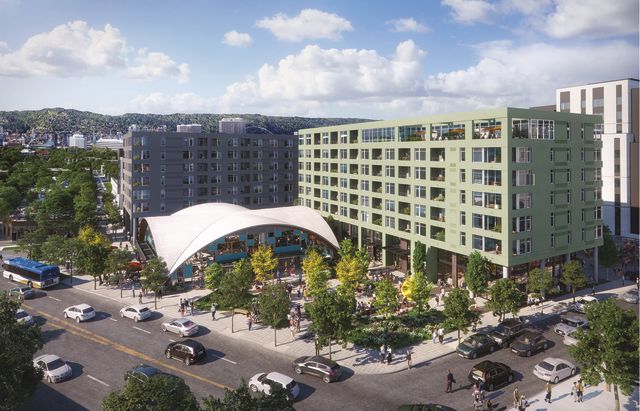
Image: Courtesy Mithun and PlompMozes
(And it’s not even the only big deal on Sandy. Closer in, a former Sunshine Dairy property in Kerns is about to become a seven-story apartment building. Portland Bottling Company CEO Terry Michaelson says his company is moving to Clackamas soon, clearing the way for development.)
The Pepsi Blocks “has, for so long, been four blocks completely closed off to the neighborhood: occupied by large warehouses, chain-link fences, and huge trucks,” says Dorothy Faris, partner at Mithun. “This is an opportunity to open it up and make it very porous and walkable.”
Though the designers and developers have saved the iconic 1962 pavilion space for potential retail use, the planned
development adds pedestrian bridges, live-work spaces, offices, and belowground parking, while reserving a portion of units for affordable housing.
BLOCK 216 Between SW Ninth and 10th Avenues and Alder and Washington Streets
When the Goodman family bought Block 216 from a Union Pacific holding company nearly 30 years ago, it was a parking lot. Until recently, up-and-coming chefs doled out brunch sandwiches, pad thai, and shawarma there amid downtown’s premier cart pod.
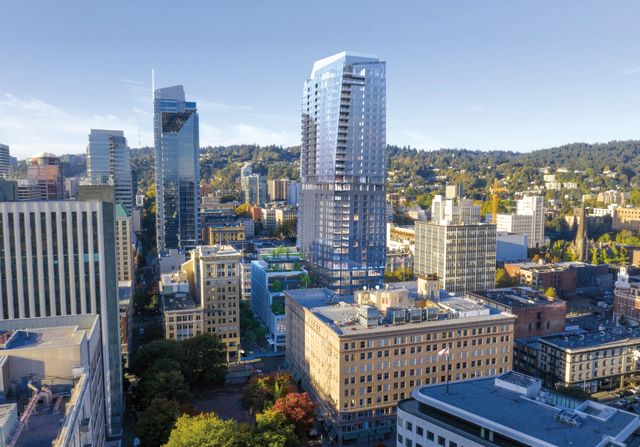
Then: food carts. Now: Block 216.
Image: Courtesy GBD Architects and Courtesy HKS Architect
Now a fully dug-out construction site, Block 216 will be home to a $600 million, 35-story mixed-use tower slated to open in 2023. It’s the latest downtown Portland project for developer Walt Bowen and his BPM Real Estate Group, which completed the $172 million Broadway Tower mixed-use building—now home to the Radisson Red hotel and an Amazon office—in 2018. The Block 216 project will include a food hall, office space, the city’s first five-star hotel in the Ritz-Carlton, and 138 Ritz-branded condominiums.
“In my opinion, Block 216 is the best undeveloped site in downtown Portland,” says Bowen. “This location deserves an iconic, world-class building.”
Rather than comply with the city’s inclusionary housing requirements, Bowen’s company paid a steep $7 million fee. Lender Greg Goodman, whose Downtown Development firm offered BPM the land lease on the property, says Bowen’s other projects helped make the case that the developer had the chops to transform the former cart pod into the centerpiece of an evolving city. The roughly $1,500 Bowen can charge per square foot of condo space to cosmopolitan clientele doesn’t hurt, either.
“We’ve become a more national or international type city,” says Goodman.
ART TOWER 1510 SW Alder St
In a neighborhood of plenty, it doesn’t pay to be a starving artist.
Portland’s Artists Repertory Theatre (ART) is spending its current season on the road after selling half of its block-size property in 2018. Now, with proceeds from the sale, a fundraiser, and an unexpected $7 million donation, ART is ready to do some building of its own.
“On a simple level, having the proceeds from the sale, the capital campaign, and the original visionary gift, this is the first time in the company’s history where we’re talking about what we really want and what would be best,” says ART artistic director Dámaso Rodríguez.
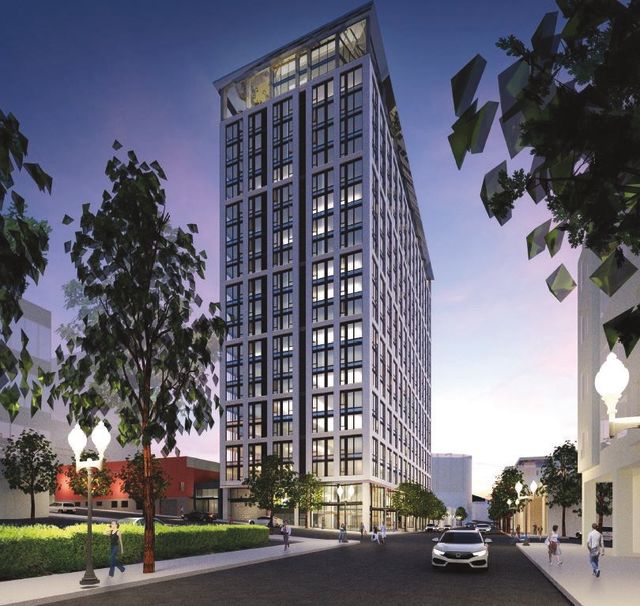
ART Tower, now rising on SW Alder
Image: Courtesy Wood Partners
Within the past few years, the Timbers and Thorns’ nearby home at Providence Park expanded, and the Oregonian’s block-size presses began giving way to the Press Blocks developments. Now, Rodríguez estimates, about 1,000 new homes are being built around the theater.
That includes the ART Tower on the company’s former land. Developer Wood Partners has begun work on a 21-story,
314-apartment development with ground-floor retail and underground parking. ART, meanwhile, has begun an expansion that will give the company—and the coworking space it hosts for other performing arts groups—a floor of extra space, a true main stage, a smaller studio stage, and four rehearsal halls.
The new theater won’t be complete until fall 2021 at the earliest. In the meantime, construction on the ART Tower has Rodríguez feeling optimistic.
“I even like the idea that there will be a building in town called the ART Tower.” he says. “I think it’s, in general, elevating the value of theater and arts in the community.”
